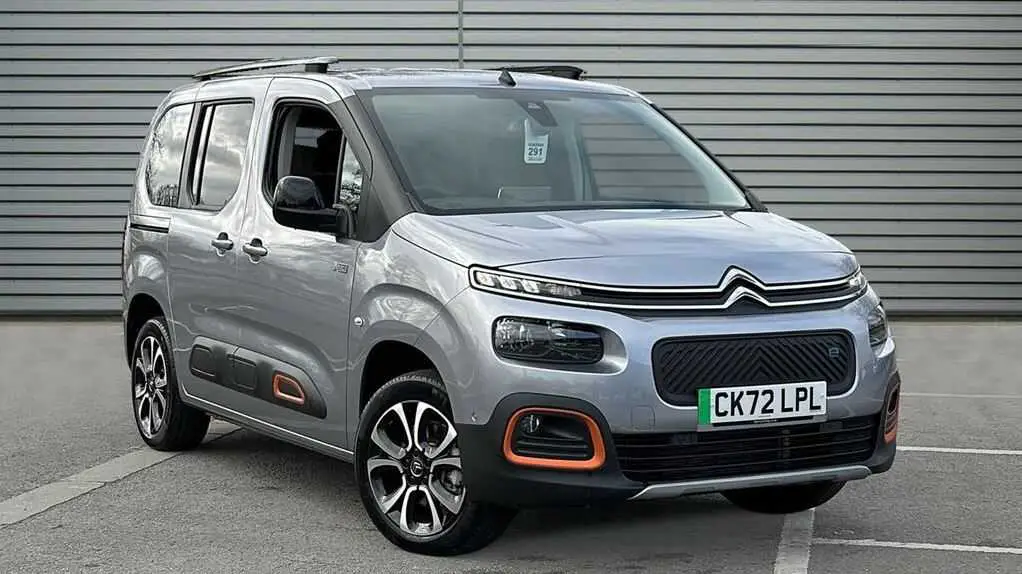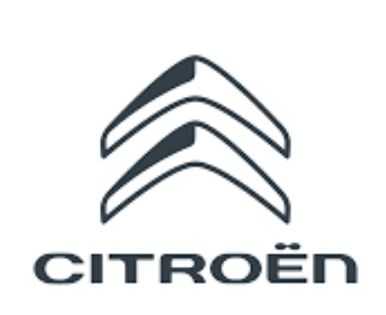Citroen Berlingo 2021-2023
The Citron Berlingo is a famous small van or leisure activity vehicle (LAV) made by the French automaker Citron. Even though I don’t know much about the Berlingo for the model years 2021–2023, I can give you an idea of what it’s like based on its earlier generations. The Citron Berlingo is known for being useful, flexible, and having a roomy cabin. It has a lot of room for goods, flexible seating, and a comfortable cabin, so it can be used by both families and businesses. The Berlingo usually has a boxy shape that makes the most of the room inside and makes it easy to load and unload goods or people. In terms of powertrains, the Berlingo is usually available with a range of petrol, diesel and sometimes electric powertrains, based on the market and specific model variant. Most engines are made to have a good mix between performance and how much fuel they use. The Berlingo has many comfort and convenience features, such as modern infotainment systems, ways to connect to the internet, and safety technologies. It is known for having an easy-to-use and useful layout inside, with lots of storage spaces and smart storage solutions all over the cabin. The Berlingo has also been praised for how nice it is to drive and how easy it is to turn. This makes it good for both short trips and longer ones.
Overview
Presentation
These illustrations and descriptions are intended as a guide. The presence and location of some components varies according to the version, trim level and country of sale.
Instruments and controls
- Bonnet release
- Dashboard fuses
- Horn
- Instrument panel
- Alarm
Courtesy lamp
Emergency or assistance call
Interior rearview mirror or Surround Rear Vision reproduction screen (Citroën Berlingo Van) Monitoring mirror (Citroën Berlingo) Warning lamps display for seat belts and front passenger airbag (Citroën Berlingo) Panoramic roof blind control (Citroën Berlingo) - Touch screen BLUETOOTH audio system Touch screen with CITROËN Connect Radio or CITROËN Connect Nav
- USB socket
- Heating/Air conditioning
- Front demisting – de-icing
- Rear screen demisting – de-icing
- Electric parking brake
“START/STOP” button - Gearbox (Petrol or Diesel)
Drive selector - 12 V socket
- 230 V accessory socket
- Glove box
- Storage compartment
Glove box - 15. Front passenger airbag deactivation (on the side of the glove box, with the door open)
Steering-mounted controls
- External lighting/direction indicators control stalk Surround Rear Vision view change button (Citroën Berlingo Van) Voice recognition activation button
- Wiper/screenwash/trip computer control stalk
- Controls to select the multimedia source
(SRC), manage music (LIST) and manage phone calls (“telephone” symbol) - Speed Limiter/Programmable Cruise Control/Adaptive cruise control controls
- Instrument panel display mode selection wheel
- Voice control
Volume adjustment - Audio system setting controls
Side control bar
- Manual headlamp beam height adjustment
- Stop & Start
- Parking sensors
- Additional heating/ventilation system (Diesel) Temperature pre-conditioning (Electric)
- Active Lane Departure Warning System
- Tyre under-inflation detection
- Electric child lock
- Heated windscreen
- Head-up display
Controls on the driver’s door
- Locking/unlocking the loading area (Citroën Berlingo Van)
- Electric child lock
Central control bar
- Hazard warning lamps
- Locking/unlocking from the inside
- Hill Assist Descent
- Eco mode
- Advanced Grip Control
- Electric parking brake
- Starting/switching off the engine
- DSC/ASR systems
Electric motor
- Charging connectors
- Traction battery
- 12 V accessory battery
- On-board charger
- Electric motor
- Charging cable
The charging connectors 1 allow 3 types of charging:
- Domestic charging in mode 2 using a domestic socket and associated charging cable 6.
- Accelerated charging in mode 3 using an accelerated charging unit (Wallbox).
- Superfast charging in mode 4 using a fast public charger.
The 400 V traction battery 2 uses Lithium-Ion technology. It stores and supplies the energy required for the operation of the electric motor, air conditioning, and heating. Its charge level is represented by an indicator and a reserve power warning lamp on the instrument panel.
The 12 V accessory battery 3 powers the vehicle’s conventional electrical system. It is recharged automatically by the traction battery via the onboard charger.
The on-board charger 4 provides domestic charging (mode 2) and accelerated charging
(mode 3) of the traction battery as well as recharging the 12 V accessory battery.
The electric motor 5 provides propulsion in accordance with the selected driving mode and driving conditions. It recovers energy during vehicle braking and deceleration phases.
Eco-driving
Eco-driving refers to a range of everyday practices that allow the motorist to optimise the vehicle’s energy consumption (fuel and/or electricity) and CO2 emissions.
Optimise your use of the gearbox
With a manual gearbox, move off gently and change up promptly. While accelerating, change up early. With an automatic gearbox, favour automatic mode. Do not depress the accelerator pedal heavily or suddenly. The gear shift indicator prompts you to engage the most suitable gear. Whenever this indication is displayed on the instrument panel, follow it straight away. With an automatic gearbox, this indicator appears only in manual mode.
Drive smoothly
Maintain a safe distance between vehicles, use engine braking rather than the brake pedal and press the accelerator gradually. These practices help to save on energy consumption, reduce CO2 emissions and decrease general traffic noise. Favour the use of the “Eco” driving mode. With an EAT8 gearbox, with the gear selector in mode D, favour “free-wheeling” by gradually lifting your foot fully off the accelerator pedal in order to save fuel. When the traffic is flowing smoothly, select cruise control.
Control the use of electrical equipment
Before moving off, if the passenger compartment is too warm, ventilate it by opening the windows and air vents before using the air conditioning. At speeds above 31 mph (50 km/h), close the windows and leave the air vents open. Consider using equipment that can help keep the temperature in the passenger compartment down (e.g. sunroof blind, window blinds). Unless automatically regulated, switch off the air conditioning as soon as the desired temperature has been reached. Switch off the demisting and defrosting functions, if they are not managed automatically. Switch off the heated seat as soon as possible. Adapt your use of the headlamps and/or foglamps to the level of visibility, in accordance with current legislation in the country in which you are driving. Avoid running the engine before moving off, particularly in winter (other than in severe wintry conditions: temperature below -23°C). The vehicle will warm up much faster while driving. As a passenger, avoid connecting your multimedia devices (e.g. film, music, video game) to help reduce the consumption of energy. Disconnect all portable devices before leaving the vehicle.
Limit the causes of excess consumption
Spread loads throughout the vehicle. Place the heaviest items in the boot as close as possible to the rear seats.
Limit the loads carried in the vehicle and minimise wind resistance (e.g. roof bars, roof rack, bicycle carrier, trailer). Preferably, use a roof box.
Remove roof bars and roof racks after use.
At the end of winter, remove snow tyres and refit summer tyres.
Comply with the servicing instructions
Check tyre pressures regularly, with the tyres cold, referring to the label in the door aperture on the driver’s side.
Carry out this check in particular:
- before a long journey.
- at each change of season.
- after a long period of use.
Do not forget the spare wheel and, where applicable, the tyres on your trailer or caravan. Have your vehicle serviced regularly (e.g. engine oil, oil filter, air filter, passenger compartment filter, etc.). Observe the schedule of operations in the manufacturer’s service schedule. With a BlueHDi Diesel engine, if the SCR system has a fault, your vehicle will emit pollution. Visit a CITROËN dealer or a qualified workshop
as soon as possible to restore your vehicle’s nitrogen oxide emissions to legal levels. When filling the fuel tank, do not continue after the third cut-out of the nozzle, to avoid overflow. You will only see the fuel consumption of your new vehicle settle down to a consistent average after the first 1,900 miles (3,000 kilometres).
Optimising the driving range (Electric)
The vehicle’s consumption of electrical energy greatly depends on the route, speed and driving style, as well as the use of the heating/air conditioning. Try to remain in the “ECO” zone on the power indicator, by driving smoothly and maintaining a steady speed. Anticipate the need to slow down, and brake smoothly, whenever possible using engine braking with the regenerative braking function, which will move the power indicator into the “CHARGE” zone. Use the air conditioning rather than the heating to demist the passenger compartment.
FAQ
A1: The Citroën Berlingo is a compact multi-purpose vehicle (MPV) designed for versatile family and cargo transportation.
A2: The Citroën Berlingo typically offers various seating configurations, including options for 5 or 7 passengers.
A3: The Citroën Berlingo 2021-2023 is usually equipped with a range of efficient gasoline and diesel engines.
A4: Yes, the Citroën Berlingo typically comes with a variety of advanced safety features such as lane departure warning, adaptive cruise control, and more.
A5: Yes, the Citroën Berlingo is renowned for its spacious cabin, making it suitable for families and cargo transport.
A6: The Citroën Berlingo usually offers both manual and automatic transmission options.
A7: Yes, the Citroën Berlingo typically features sliding doors on both sides for convenient access to the rear seats and cargo area.
A8: Yes, the Citroën Berlingo often comes equipped with a touchscreen infotainment system that includes connectivity options and entertainment features.
A9: Yes, the Citroën Berlingo usually features fold-flat seats that can be configured to create a larger cargo area.
A10: Yes, the Citroën Berlingo typically offers different trim levels with varying levels of features and amenities.
A11: Yes, the Citroën Berlingo is often praised for its fuel-efficient engine options, making it economical for both city and highway driving.
A12: Yes, the Citroën Berlingo is designed to accommodate child seats, making it family-friendly.
A13: Yes, the Citroën Berlingo typically offers roof rails as optional equipment for carrying additional cargo.
A14: Yes, the Citroën Berlingo’s exterior design often reflects modern styling cues while emphasizing its practicality.
A15: Yes, the Citroën Berlingo’s compact size and versatile features make it well-suited for various driving environments.
Useful Link
2021-2023 Citroen Berlingo Warning and Indicator Lights User Manual
2021-2023 Citroen Berlingo Alarm System Instructions


